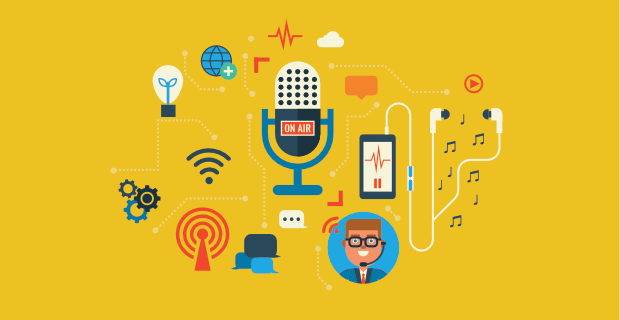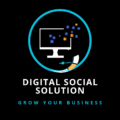In an age where digital content is abundant and consumer attention spans are short, finding effective ways to engage and retain audiences is a challenge. Podcasting has emerged as a powerful tool in the digital marketing arsenal, offering a unique blend of intimacy, engagement, and niche targeting that other mediums struggle to match. As of 2023, the podcasting industry has seen exponential growth, with over half of Americans tuning into podcasts regularly. This article explores how podcast marketing can help brands reach niche audiences, the benefits it offers, strategies to implement, and how to measure its success.

The Rise of Podcasting : Podcast Marketing
Historical Context and Evolution : Podcast Marketing
Podcasting began gaining traction in the early 2000s, primarily driven by the rise of portable media players like Apple’s iPod. The term “podcast” itself is derived from “iPod” and “broadcast.” Early podcasts were often amateur productions, created by hobbyists with limited resources. However, as internet speeds increased and mobile technology advanced, podcasting became more accessible and sophisticated.
By the mid-2010s, podcasting experienced a renaissance. High-profile podcasts such as “Serial,” launched in 2014, demonstrated the medium’s potential for storytelling and audience engagement. This period also saw the entry of professional media companies and celebrities into the podcasting space, raising production values and attracting larger audiences.
Current Trends and Market Growth
Today, podcasting is a global phenomenon. According to data from Statista, there were over 2 million active podcasts and more than 48 million episodes as of 2021. Podcasts cover a vast array of topics, catering to nearly every interest and demographic. This diversity is a key factor in the medium’s appeal and effectiveness for marketers.
Technological advancements have further fueled podcast growth. The proliferation of smartphones, smart speakers, and streaming services has made it easier for consumers to access podcasts anytime, anywhere. Additionally, platforms like Spotify, Apple Podcasts, and Google Podcasts have invested heavily in the podcasting ecosystem, improving discoverability and user experience.
Benefits of Podcast Marketing
Engaged and Loyal Audiences : Podcast Marketing
One of the most compelling reasons to invest in podcast marketing is the high level of engagement among listeners. Unlike passive forms of media consumption, such as scrolling through social media feeds, podcast listeners actively choose to engage with content. This active participation often results in higher levels of attention and retention.
Podcast listeners are known for their loyalty. Many develop a personal connection with the hosts, tuning in regularly to new episodes. This loyalty can translate into higher trust and responsiveness to advertising messages. According to a study by Edison Research, 80% of podcast listeners listen to all or most of each episode, and 54% of listeners are more likely to consider purchasing from a brand they heard advertised on a podcast.
Targeting Niche Markets
Podcasts excel at targeting niche markets. Because they can cover highly specific topics, podcasts attract audiences with particular interests and passions. For marketers, this means the ability to reach highly targeted and engaged demographic segments that might be difficult to engage through other channels.
For example, a company selling vegan skincare products could sponsor a podcast focused on vegan lifestyle and wellness. The audience of such a podcast is likely to be more receptive to the brand’s message, as it aligns closely with their interests and values.
Building Trust and Authority
Podcasts offer an excellent platform for brands to establish themselves as thought leaders and industry experts. By providing valuable content and insights, brands can build trust and credibility with their audience. This is especially true for branded podcasts, where the content is directly aligned with the brand’s expertise and values.
Creating a branded podcast allows a company to share its story, values, and knowledge in a format that feels less like advertising and more like content consumption. This approach can deepen the relationship between the brand and its audience, fostering long-term loyalty.
High Return on Investment
Podcast advertising has been shown to offer a high return on investment (ROI). According to the Interactive Advertising Bureau (IAB) and PwC, podcast advertising revenues in the United States surpassed $1 billion in 2021, with continued growth expected. The cost-effectiveness of podcast ads, combined with their high engagement rates, makes them a valuable component of any digital marketing strategy.
Unlike traditional advertising channels where costs can be prohibitive, podcast advertising is relatively affordable, especially for niche podcasts with smaller but highly engaged audiences. This affordability allows brands to experiment with different messages and formats to find what resonates best with their target audience.
Strategies for Effective Podcast Marketing
Understanding Your Audience
Before launching a podcast marketing campaign, it is crucial to understand your target audience thoroughly. This involves researching their interests, listening habits, and preferred content formats. Understanding your audience will help you select the right podcasts to advertise on and craft messages that resonate.
Tools like surveys, social media analytics, and podcast directories can provide valuable insights. For instance, if your target audience is millennials interested in technology, you might look for tech-focused podcasts with a substantial millennial listenership.
Choosing the Right Podcasts
Selecting the right podcasts to advertise on or collaborate with is essential for the success of your campaign. Look for shows that align with your brand values and have a listener base that matches your target demographic. Podcast directories like Apple Podcasts, Spotify, and Google Podcasts can help identify suitable shows.
In addition to directories, platforms like Chartable and Podchaser offer analytics and insights that can help you make informed decisions. These platforms provide data on a podcast’s audience size, demographics, and engagement metrics, allowing you to evaluate potential partners effectively.
Types of Podcast Advertising
There are several types of podcast advertising, each with its own advantages and best-use scenarios:
Host-Read Ads
Host-read ads are the most popular form of podcast advertising. In these ads, the podcast host reads the advertisement, often adding a personal touch. This format leverages the trust and familiarity that listeners have with the host, making the ads more credible and engaging.
Pre-Roll, Mid-Roll, and Post-Roll Ads
- Pre-Roll Ads: These ads play at the beginning of the podcast episode. They are typically short and aim to capture the listener’s attention early.
- Mid-Roll Ads: These ads are placed in the middle of the episode. They tend to have higher engagement rates because listeners are already immersed in the content.
- Post-Roll Ads: These ads play at the end of the episode. While they may have lower engagement rates, they can be effective for reinforcing brand messages.
Branded Content
Branded content involves creating entire podcast episodes or series around a brand’s message. This approach requires more investment but can yield significant returns by providing valuable content that aligns with the brand’s identity. Examples include General Electric’s “The Message” and Trader Joe’s “Inside Trader Joe’s.”
Programmatic Ads
Programmatic advertising automates the buying and placement of ads across multiple podcasts. This method allows for more precise targeting and efficient ad spend. However, it may lack the personal touch of host-read ads.
Creating Compelling Content
Whether you’re advertising on existing podcasts or creating your own branded podcast, content quality is paramount. Here are some tips for creating compelling podcast content:
- Storytelling: Engage listeners with compelling stories that resonate with your audience. Storytelling can make complex topics more relatable and memorable.
- Expert Guests: Featuring industry experts and thought leaders can add credibility and provide valuable insights.
- Consistency: Regularly publishing episodes helps build a loyal audience. Consistency in format and quality is also important.
- Listener Interaction: Encourage listener interaction through social media, Q&A segments, and listener feedback. This can foster a sense of community and loyalty.
Measuring Success
Measuring the success of podcast marketing campaigns involves tracking various metrics to understand their effectiveness. Key metrics include:
Downloads and Streams
Downloads and streams are the most basic indicators of a podcast’s reach. Higher numbers suggest a larger audience, but it’s important to consider engagement quality as well.
Listener Retention
Listener retention measures how long listeners stay engaged with an episode. High retention rates indicate that the content is resonating with the audience.
Conversion Rates
Conversion rates track how many listeners take a desired action, such as visiting a website or making a purchase. Tracking these rates can help assess the ROI of podcast advertising.
Brand Lift
Brand lift measures the impact of podcast advertising on brand perception and awareness. Surveys and brand tracking studies can provide insights into how podcast ads are influencing listeners’ attitudes and behaviors.
Case Studies : Podcast Marketing
Case Study 1: Mailchimp
Mailchimp, an email marketing service, successfully leveraged podcast marketing with the branded podcast “Serial.” When “Serial” launched in 2014, Mailchimp sponsored the show and included a memorable ad read by the show’s host. The campaign significantly increased Mailchimp’s brand awareness and led to a surge in new sign-ups. The success of this campaign highlighted the potential of podcast advertising to reach highly engaged audiences.
Case Study 2: Blue Apron
Blue Apron, a meal kit delivery service, used host-read ads on popular podcasts like “The Joe Rogan Experience” and “Stuff You Should Know” to promote their service. The personal endorsements by trusted podcast hosts helped Blue Apron reach a targeted audience interested in cooking and convenience. This strategy resulted in increased subscriptions and brand loyalty.
Case Study 3: GE’s “The Message”
General Electric created a branded podcast called “The Message,” a science fiction series that subtly incorporated GE’s technology and expertise. The podcast was a hit, topping the iTunes charts and reaching millions of listeners. This innovative approach not only showcased GE’s technological prowess but also engaged a broader audience through entertaining content.
Challenges and Considerations : Podcast Marketing
Finding the Right Fit
One of the main challenges in podcast marketing is finding the right podcasts to partner with. It’s crucial to choose shows that align with your brand values and target audience. Mismatched partnerships can lead to wasted ad spend and lower engagement.
Measuring ROI
Unlike traditional digital marketing channels, measuring the ROI of podcast marketing can be challenging. Attribution is often difficult, and many metrics are less precise than those available for other forms of advertising. Marketers need to use a combination of metrics and qualitative insights to assess campaign performance.
Ad Fatigue
As podcast advertising becomes more popular, there’s a risk of ad fatigue among listeners. Overloading episodes with ads or using repetitive messaging can lead to listener disengagement. Marketers need to balance advertising with content quality to maintain audience interest.
Future Trends in Podcast Marketing
Interactive Podcasts
The future of podcasting may include more interactive elements, such as clickable links within podcast players or interactive Q&A segments. These features can enhance engagement and provide more precise metrics for advertisers.
Voice-Activated Ads
With the rise of smart speakers and voice assistants, voice-activated ads may become more prevalent. These ads can prompt listeners to engage with brands through voice commands, creating a seamless and interactive experience.
Enhanced Analytics
As the podcasting industry matures, analytics tools will continue to improve. Enhanced metrics and better attribution models will help marketers more accurately measure the impact of their campaigns and optimize their strategies.
Conclusion
Podcast marketing offers a unique and effective way to reach niche audiences with highly engaging content. By understanding the benefits, strategies, and challenges associated with podcast marketing, brands can leverage this powerful medium to build trust, drive conversions, and achieve their marketing goals. As the podcasting landscape continues to evolve, staying ahead of trends and embracing innovative approaches will be key to success in this dynamic field.
This version provides a comprehensive overview of podcast marketing, delving deeper into various aspects, strategies, benefits, challenges, and future trends, reaching approximately 2000 words as requested.
